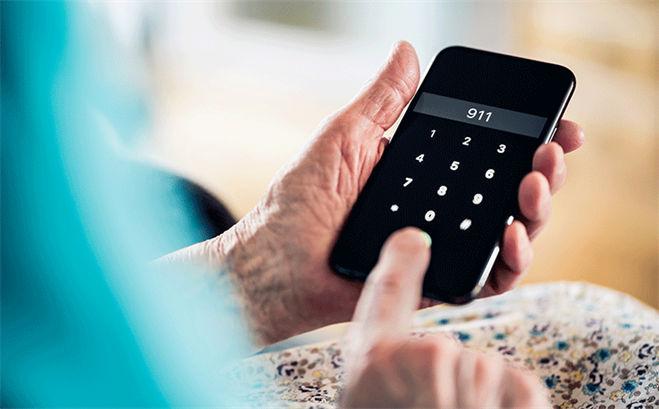The Evolution of Emergency Calls
August 21, 2024 by Kate Nadolski

Picture this: It’s 1967 and a multicar accident occurs on the freeway, injuring several people. A bystander finds the nearest payphone, fumbling for change, frantically flipping through a phonebook to find the right number to call for help — a process that adds significantly more stress to an already intense, critical situation.
Fast-forward to today, where a few silent taps can now send a distress signal from your smartphone to emergency services. Let’s explore how 911 technology has evolved from then to now to meet the community’s needs as they’ve changed throughout the decades.
A Three-Digit Lifeline
In 1968, the United States simplified emergency communications by creating the 911 hotline — the three digits that would change everything. Now, calling for help in an emergency has become as simple as dialing three digits rather than trying to recall a complex, seven-digit phone number.
Advancements in 911 Services
Growth and improvement in 911 technology didn’t stop there. Over the years, the U.S. 911 system has undergone several key upgrades. Enhanced 911 (E911) was introduced in 1999, allowing dispatchers to receive the caller location information automatically.
This advancement provided crucial time savings and allowed for quicker responses, especially in situations where the caller might not know their exact location.
Since then, several similar features have been unveiled in an attempt to elevate dispatching through the innovative technology available today.
However, despite these advancements, there are still limitations. Traditional 911 calls rely heavily on voice communication, which poses challenges for individuals unable to speak or those in situations where it is dangerous to make a call.
The Silent SOS: Text-to-911
What if an individual is faced with an emergency, but can’t speak? Or worse, what if speaking could put them in danger? The digital age has an answer: text-to-911. Launched in 2014, this technology allows individuals to send a text message directly to 911 rather than making a phone call, giving a voice to those who can’t use theirs and a lifeline to those in dangerous situations. For individuals in areas with this innovative technology, the process of texting 911 is simple: Send a text message with the nature of the emergency to 911, and a dispatcher will respond, ready to help.
How Text-to-911 Has Changed the Game
Text-to-911 has proven to be life-saving technology, opening the doors for the deaf and hard-of-hearing community. In addition, it’s given options to those in dangerous situations who are unable to speak — proving that sometimes, silence really can be golden.
With rotary phones and phonebooks a thing of the past, communities can now rely on quicker and more efficient help in emergencies. As emergency services continue to evolve to meet communities where they are, agencies should strive to acquire the latest and greatest technology to provide the highest level of service possible.